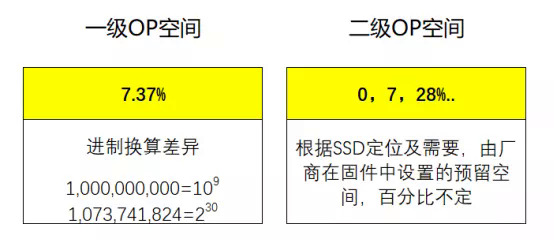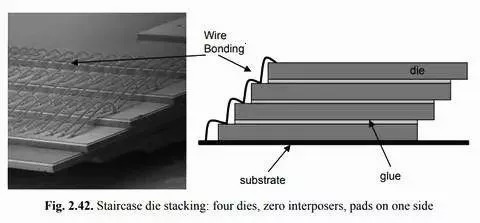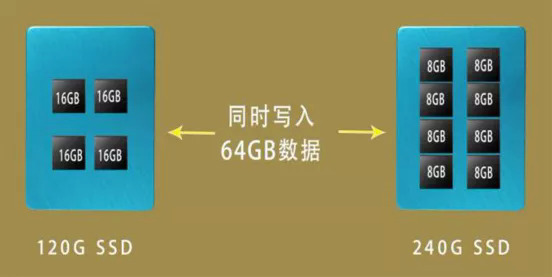An under-capacity SSD chip is a bad chip? For example, a 128G SSD chip is better than a 120G chip, a 256G chip is better than a 240G chip, and so on, such a gimmick thrown in the market will cause a certain amount of demand.
Large capacity SSDs can meet more of our needs for data storage. Compared to office workers, gaming end users, large capacity can provide greater performance, both read and write speeds and 4K random read speeds.
Performance and longevity are what start the demand
However, the user’s purchasing needs lie not only in capacity, but also in performance and longevity. The lack of capacity leads to the fact that SSDs with little capacity left need to erase the old data before they can be filled with new data, but this operation will take time and erasing the data will also reduce the life of the SSD once. (For example, the current market currency of TLC can only withstand 3K full disk erasures)
Therefore, solid-state has always been the pursuit of more capacity, only few people pay attention to why the capacity of solid-state drives are the Nth power of 2, such as 120G, 480G, 960 such.
In the old days Nand Flash were designed with 2 bit per cell, a Flash cell can store two bits of data, even if Nand Flash developed to TLC to QLC, the capacity is still the Nth power of 2.
And each solid state will have an OP (Over-provisioning) reserved space, including the primary OP space naturally generated by the binary conversion and additional secondary OP space as needed, this part of the OP space actually exists in the SSD, just can not be directly read, write and access by the user.
The OP reserved space is used to optimize write performance, reduce write amplification, improve write life, and other uses. Depending on the usage needs, users can also manually add a third layer of OP space.
Varying Costs
The core of a solid-state drive consists mainly of the main control, flash memory and PCB. The only difference between 240G and 120G on the market is the amount of flash memory, but on the cost, two 120G and one 240G solid state compared to the 240G will be less than the cost of an enclosure, PCB board and master control, but this is the surface, the essence or Nand Flash, which accounts for 70-80% of the cost of the entire SSD.
With the current 64-layer stacked 3D process, the capacity of a single die can reach 256Gbit (32GB), or even 512Gbit (64GB), meaning that only a few dies are needed for the same capacity of flash particles.
And to ensure that there is a sufficient amount of flash memory to be able to read and write concurrently, using the advantages of the channel to improve read and write performance, will choose the box gauge lower capacity Die, which is why small capacity SSDs do not reduce costs by increasing the capacity of a single Die.
The large capacity does not have these troubles, the principle is the same as our daily RAID array, which is why large capacity SSD read and write performance is stronger.
Post time: Mar-27-2023






